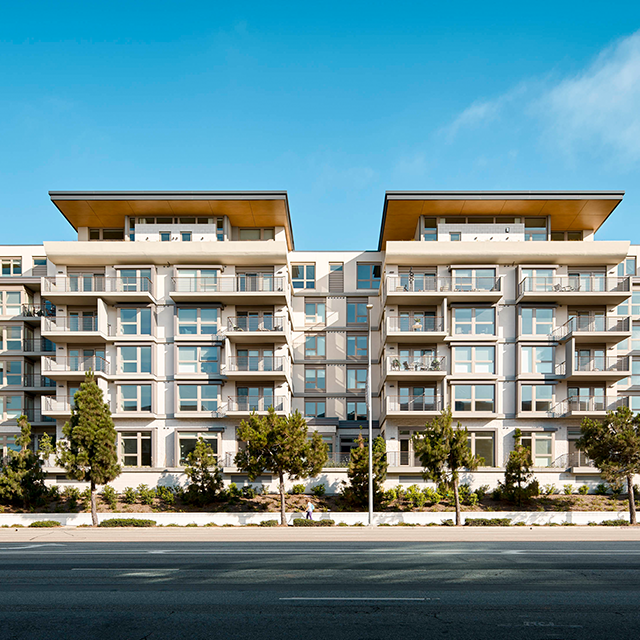By Steve Nelson, senior vice president of estimating & preconstruction at C.W. Driver Companies
There is no specific formula to creating an accurate construction project budget. In most cases, a combination of science, art, relationships and luck combine to produce an accurate estimate. Having said that, these are five best practices that – if taken into account – will make the process of managing costs and project design much easier.
1. Ensure Strong Communication with the Owner and Design Team
One of the most – if not the most – important factors in the budget process is effective communication with the owner and design team. Poor communication can lead to unmet expectations, project design delays and flaws and, at its worst, an end product that does not meet the client’s needs. During the preconstruction process, it is essential that the design team establishes a basis of design for the project, and that the general contractor is an integral part of this step.
In addition to construction-related issues, the team must work closely with the owner to determine the financial impacts of the project. Will the owner keep or sell the building? If keeping the asset, how long does the owner plan to do so? Both of these questions will help determine how expensive or economical the building should be. The design team, GC and owner should also consider how much flexibility the building needs to have in the long run. For example, load bearing walls may be required for the structural design, which can limit the feasibility of removing or altering the walls in the future.
2. Have a Plan in Place for Escalation
Due to heightened activity in the current construction market, there is significant cost inflation within the subcontractor community, who have the flexibility to pick and choose their projects based on higher fees, labor availability, relationships with general contractors and the ability to negotiate the project instead of bidding for the work. Additionally, while the consumer price index in the U.S. ranges annually from 1-2 percent for everyday consumer goods, in the construction market the inflation rate could be 5-6 percent.
Projecting an accurate budget in an escalating construction market demands communication and involvement from all parties (e.g., subcontractors, material providers) from the very beginning. It may mean negotiating trades earlier in the design process to purchase materials and secure a labor force sooner.
To manage escalation during the bid process, one best practice is to use a cost index. This allows the GC to control the escalation and helps ensure there is no “blank check” with materials purchases. In this approach, subcontractors provide the name of their material suppliers and a quote of the price they will pay for the materials when they bid the project. The GC then utilizes an accepted cost index for that material. When the subcontractor purchases the material, the GC re-visits the price index. If the price has increased 1-2 percent since the bid, the subcontractor may absorb that cost. If the price has gone up 5-6 percent, the subcontractor will not be required to cover the increase. If the price has decreased significantly, the owner may receive a credit. Including exact language about what percentage increases and/or decreases merit a change in the contract is essential.
3. Understand the Building Codes
In California, the California Building Code, including Title 24 and Cal Green Standards, serves as the baseline for the design and construction of all buildings. However, many individual cities and counties have more strict and limiting building codes and construction regulations. As a result, each construction site will have its own set of challenges and rules. Many cities have different regulations related to how they classify high-rise buildings, many of which are more restrictive than the height requirements established in the California Building Code. In these cases, if you unintentionally design the building height in excess of the regulation, the project will be classified as a high-rise by the city. The impact to the budget could be as much as a 10- to 15‑percent increase to the total project cost.
Additionally, some cities may have limitations to the hours in which construction can occur, meaning that crews cannot open the fence, stage materials or construction equipment or start any prep work prior to a certain time. In the most stringent cases, failure to abide by these rules could land the superintendent in jail or a hefty fine.
4. Be Prepared for Conditions of Approval
Once a project is submitted for planning approval, the municipality, county, state and/or federal government may come back with conditions of approval that the owner must fulfill in order for the project to move forward. More often than not, these requirements are unpredictable and may not have anything to do with the physical project. On one high-rise project in Northern California, the city required the purchase of a specialized, high-rise fire truck, which the local fire department wanted, as a part of its conditions of approval.
Meeting with the correct city personnel to discuss any new codes, variances, ordinances or anticipated conditions of approval at the outset of the project may help to avoid surprises. The process must be approached with honest communication and in-depth research to unearth as many unknowns as possible. Hiring a planning and permit expeditor that specializes in the municipality, county, state and/or federal government that the project is located in may also help with the process. If specific conditions of approval cannot be ascertained from the city, transparency with the owner is key so additional funds can be put in the pro forma or alternate solutions can be put into place to mitigate risk.
5. Choose the Right Building Occupancy and Building Type
The initial building code assessment determines how the building will be “used.” In some cases (e.g., office, retail) this determination is simple; in others (e.g., mixed occupancies, hazardous use occupancies) it can be more complex. Because many contractors are unaware of this initial determination for the building design and design consultants, may often use the wrong or too conservative occupancy classification, it is vitally important that a GC with this type of knowledge assists the design team to ensure proper classification at the beginning of the process.
Once the building occupancy has been determined, the building type can then be established – an important step in determining the final design and cost of the project. Ultimately, the building type determines how the building is constructed, its proximity to other buildings, its size and the structural systems that may be used. Determining the correct building type at the beginning will greatly improve the accuracy of early budgets.
Conclusion
Effective, clear communication with the owner and design team, early award of subcontractors, management of cost escalation with indexing, research into the conditions of approval, knowledge of the building codes and occupancy type, and awareness of current and future construction market trends will set you up for success as you develop your budget.


